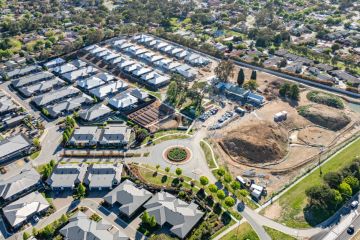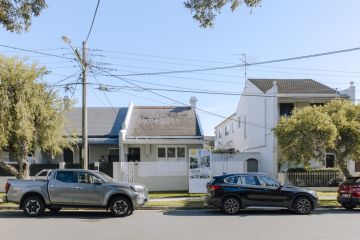The million-dollar suburbs that just flipped in buyers’ favour
A range of sought-after locales are tipping into buyers’ favour over winter, bucking the seasonal trend of shrinking pools of properties to choose from.
Nationally, total listings have fallen 7 per cent since mid-April – which typically marks the beginning of the winter market slowdown – Cotality (formerly CoreLogic) data shows. But Cotality’s head of Australian research, Eliza Owen, said some regions saw overall listing numbers rise.
“It’s unusual for this time of year, basically – usually you would be seeing total listings trending down because fewer people are putting listings on the market in winter,” she said.
“This could indicate these are buyers’ markets because there are more homes on the market than a few weeks ago.”
The area with the biggest rise in the number of properties for sale was Melbourne’s Bayside statistical area, which is mostly made up of the Bayside Council suburbs, including blue-chip Brighton and neighbouring Sandringham. The area’s median value was $1.67 million, and there were 52 more homes for sale in early June than in mid-April.

Owen said some parts of Melbourne had subdued reactions to the Reserve Bank’s cash rate cuts, which have been identified as the cause of a bump in buyer activity and sentiment.
“Areas like Bayside, which is a relatively high-end pocket of the market, and has a more subtle reaction to cash rate decreases,” she said.
Sellers could have decided to list because of the sentiment boost, Owen said, but found buyers to be less keen than expected. “Buyers could be shying away because of an uncertain geopolitical environment and tariff uncertainty … Now may not be the best time to commit to buying a property.”
Nick Sinclair, a Jellis Craig director and selling agent in the Bayside area, said buyers were in a holding pattern. “It’s just a bit of a lull at the moment. I think a lot of people are waiting … for school holidays to finish, interest rate cuts, a new financial year and tax returns … just brighter horizons.”
Buyers in the area were worried about paying too much, Sinclair said, but would fight hard to secure homes that didn’t need any renovations. “People are paying more than what makes sense for just the convenience,” he said.
The next biggest growth in listings over the same period was in Sydney’s Bankstown region, which includes the suburbs of Bankstown, Panania and Padstow, where there were 42 more homes for sale. The median value there was $1,346,000.
“The biggest number increase in areas … they’re million-dollar markets, they’re quite expensive,” Owen said. “They’re the kinds of markets where we would have seen absorption of stock in a declining rates environment.
“It’s weird that those expensive markets haven’t seen a bigger reaction to rate cuts. But I think that’s tied to the uncertainty that’s come with this rate-cutting cycle.”
Owen said the Bankstown region tended to have higher levels of listings than was typical, which could explain the unseasonal growth.

LJ Hooker Bankstown agent Chedi Chidiac said both buyers and sellers were more active in the wake of rate cuts. “Since winter [the past six weeks], it’s picked up a lot now, since interest rate cuts as well.”
He said some segments of the market were slow, though. “Everything under the $1.7 million to $1.8 million mark is doing well, but anything over that $2 million mark is taking a bit longer because it’s a bit of a smaller buyer pool.”
Owen highlighted areas with a high number of units, which have recently and historically been less attractive to buyers.
“The Parramatta region has increased by 13 listings and values are falling there as well, so it could well be that a high level of units is contributing to that slump as well, and Bankstown is another one with a high number of high-density unit pockets which could be skewing that density of listings,” she said.
Owen said markets with growing numbers of listings should be easier for buyers to navigate.
“If you’re in a pretty good position, and you’re ready to go with a purchase, it could be a good time to be looking to these markets,” she said. “It will give buyers more choice, more negotiating power and less urgency.”
We recommend
We thought you might like
States
Capital Cities
Capital Cities - Rentals
Popular Areas
Allhomes
More
- © 2025, CoStar Group Inc.










